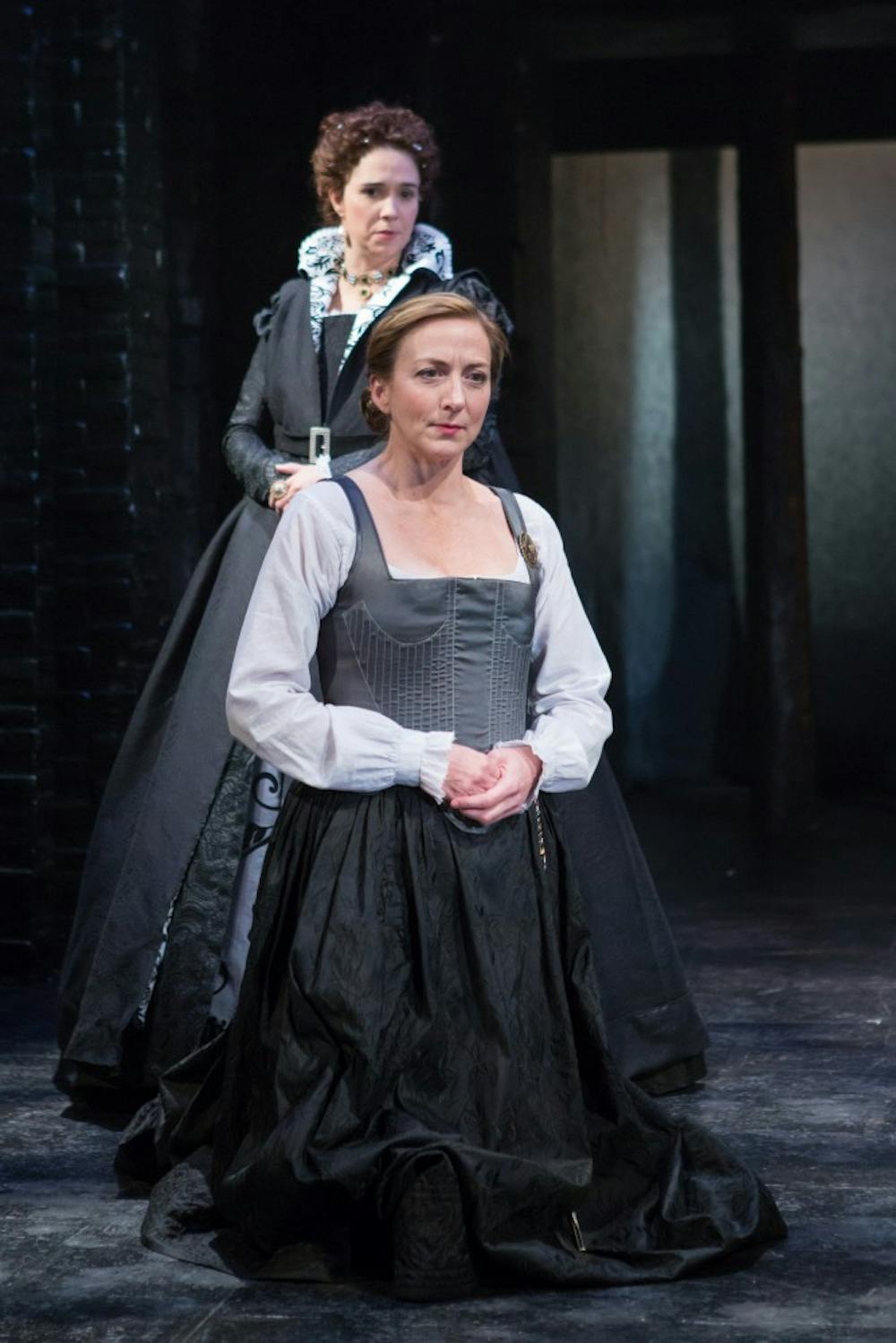While everyone else spent the night of Feb. 1 pitting the New England Patriots against the Seattle Seahawks, the audience in the Folger Theater witnessed another standoff: Queen Mary of Scotland against Queen Elizabeth of England.
The Peter Oswald translation of Friedrich Schiller's classic "Mary Stuart" (directed by Richard Clifford) had just recently begun its Jan. 27 to March 8 run at the Folger Shakespeare Library.
At the entrance, the phrase “All the world’s a stage, and all men and women merely players” inscribed across the ceiling immediately catches one’s attention. The two heroines of the show, Mary and Elizabeth, are no exception to having little say in their own affairs. They are two pawns in a political drama who, despite having their own convictions and opinions, end up giving up their own individual will for the will of the public. Elizabeth becomes a pawn of her administration and the people of England, turning Mary into her pawn in turn.
The main character Mary, portrayed by Kate Eastwood Norris, previously in “The Taming of the Shrew,” “Macbeth” and “A Midsummer Night’s Dream,” has been convicted for helping murder her husband and has spent the last 18 years imprisoned in England. The play centers on her final days of life as her cousin, Queen Elizabeth I, is pushed to make a decision regarding Mary’s fate: Will she sign the death warrant or leave Mary to live out the rest of her days in prison with limited freedom?
The cast adapted fantastically to their roles of these political players, never coming out of character despite a couple verbal slip-ups, from which they swiftly recovered. The historically accurate costumes and sets transported the onlookers to 16th century England for the near three hour duration of the play. Mary’s simple clothes made her beauty the true centerpiece of her character, while Elizabeth’s curly red hair made every painting of the Queen one has ever seen come alive. The audience almost forgot that it was in the heart of D.C. and not personally part of the drama.
In the first act, viewers are introduced to Mary and her unfortunate peril. In the second act, they faced Elizabeth I and learned of the indecision she is gripped with about deciding Mary’s fate. In the third act, however, the two heroines finally came together, personalities and tempers colliding loudly. Although the entire play was captivating, the best scene was this converging and clashing of the two leading ladies, cousins Mary and Elizabeth I. It was the scenic climax of the production, tension built by multiple characters in separate rooms finally brought to one meeting place.
Despite the heavy and serious plot, the adaptation had humor to alleviate the tense tones of the production. The characters dropped in phrases such as “bollocks,” “stay down there, it is your place,” and “I did not do it, but if I had, would it have been surprising?” that got laughter from the entire audience.
Overall, “Mary Stuart” was a fantastic combination of political, religious, family, and romantic drama, with themes of stubbornness, tangled family relationships, duplicity, freedom and slavery to one’s political status. It’s sure to please an audience of multiple ages and interests.





